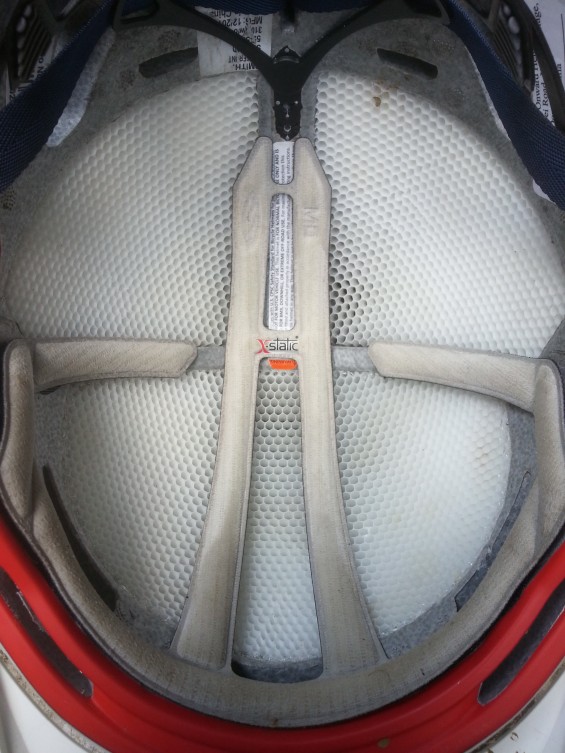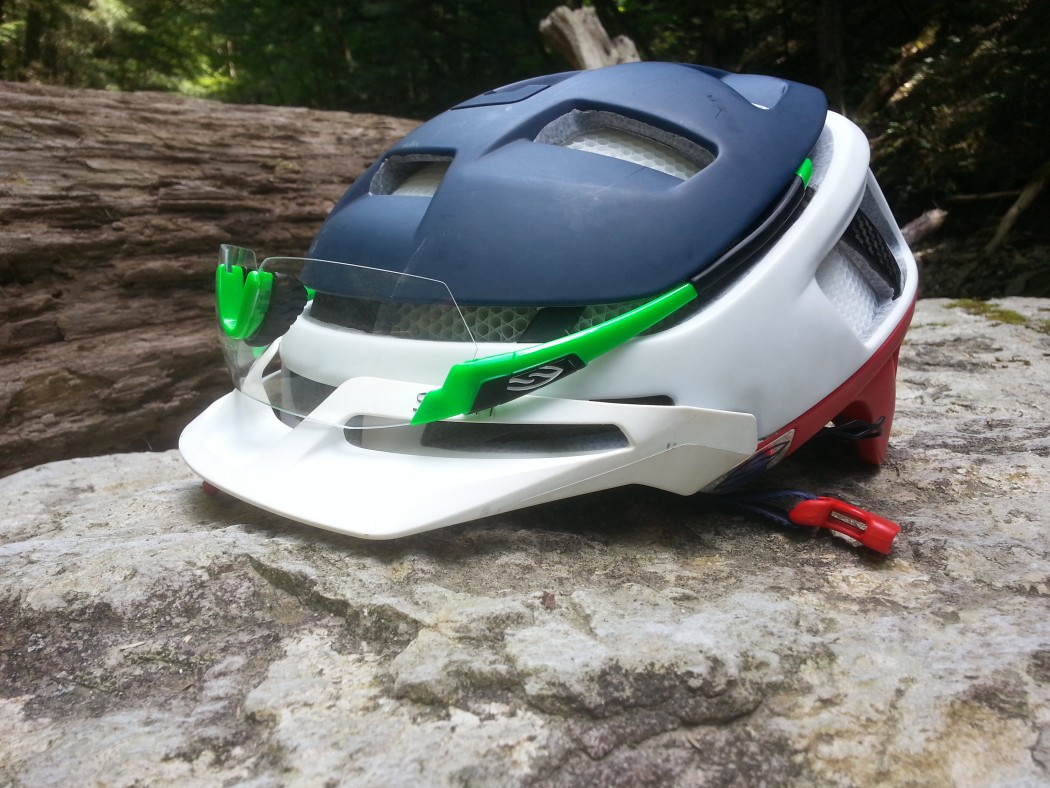Helmets really haven’t changed much in the past decade. Yes, they offer better protection and fit when compared to helmets from ten years back, but the basic construction remains essentially the same, with the vast majority of helmets made from EPS foam. Things do seem to be changing, though, with companies like POC and Scott offering helmets with internal MIPS systems meant to protect your think bone against rotational forces. On a side note, the jury is still out on whether or not MIPS systems offer any added protection.
Smith’s newly released Forefront is not a MIPS helmet. It is, however, very different than anything else produced up to this point.
Features
The Forefront is designed as an all-mountain helmet, with extra coverage not only in the rear, but also around the sides when compared to my more traditional Giro Xar.
The Forefront’s Koroyd construction is what sets it apart both visually and technologically. The honeycomb-like material yields a “30% reduction in energy transmission” (Smith) when tested to international standards. The forefront still utilizes what I would describe as an EPS-based frame, but the EPS is much thinner because of the Koroyd which makes up the next-to-skull layer.
Optical integration is a key feature as well, as the Forefront is intended to work seamlessly with Smith’s performance shades and even some of their lifestyle frames. The helmet is also shaped to integrate well with goggles, should you feel the need to get #endurospecific.
One restriction inherent with the Forefront’s design is the inability to strap a light or camera mount through the helmet since all the vents are closed by the Koroyd layer. Smith wisely designed in a threaded hole atop the helmet where a mount kit can interface with Light and Motion lights and GoPro Cameras.
Verdict
The first thing I noticed before I even put the Forefront on was how uniform the inside was. With traditional EPS helmets, there can sometimes be strange contouring around the vents. The Koroyd layer inside the Forefront creates a much more even sphere, such that there is probably 50% less padding on the inside. The fit is excellent, with three different height options for the retention system. Per usual, I fancied the lowest of the three. The Forefront sits appreciably lower on the head than Troy Lee’s towering A1 Drone or Bell’s Super. There are no pressure points and I never found myself thinking about the helmet while riding.
The Forefront’s 334 gram weight is impressive given the amount of coverage and increased impact protection. Unfortunately the vertically-oriented Koroyd seems to block most horizontal airflow, causing the lone Forehead pad to become saturated with sweat and drip annoyingly. On several occasions I couldn’t ride with the Smith Pivlocks I tested it with because I was having trouble seeing through all the sweat on the lenses. Some additional padding would likely help absorb some moisture, but my verdict is that the Forefront needs more forehead ventilation.

Other than the problem mentioned above, optical integration was super, with the Pivlocks fitting seamlessly with the helmet. It is also possible to pop the ear stems into the vents of the helmet for storage. On one occasion I actually dropped in on a gnarly descent with the shades popped into the vents. After taking a decent sized drop I realized what I had done and frantically stopped, thinking I had probably run the glasses over somewhere back up the trail. Impressively, they were still in place on the helmet.
It would be nice to see more mounting options for those of us who have invested in lights or cameras from companies other than Light and Motion and GoPro.
Rating
Innovation 2/2
Function 1/2
Aesthetics 2/2
Features 1.5/2
Quality / Price 1.5/2
Overall 8/10
Pros
– Excellent fit
– Unrivaled combination of coverage, impact absorption, and weight
– Good optical integration
Cons
– Poor ventilation
– Limited mounting options
– Not inexpensive at $220
Spec
MSRP: $220
Colors: Lots of ‘em
Sizes: Small (51-55cm), Medium (tested, 55-59cm), Large (59-63cm)






